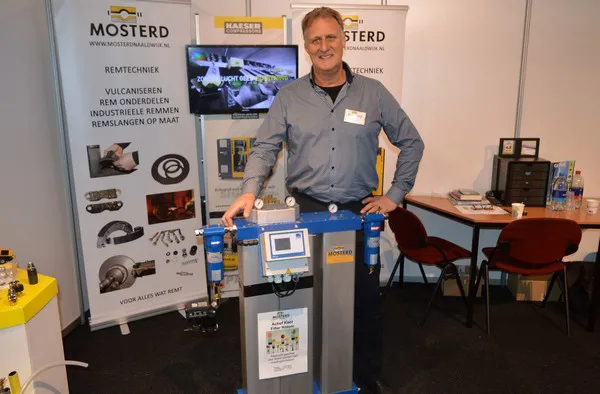The use of compressed air in the fruit, vegetable, and flower sectors is versatile, says Jaco Mosterd of Mosterd Naaldwijk. "Remember that for every compressed air application, apart from capacity and the desired air pressure, compressed air quality is very important. This is achieved through filtration of the compressed air."

At HortiContact, Mosterd Naaldwijk presented an activated carbon filter column. This makes compressed air suitable for direct contact with food.
The filtration works as follows: there are three steps to clean compressed air. The first step takes place in the filter housing. This is where pre-filtration takes place. The coarsest dirt is collected here.
The second step is the membrane dryer. Here, the air is cooled back down to -20 or -40 degrees Celsius, as required. This lower temperature removes practically all moisture, so bacteria cannot thrive in it. Bacteria are also partly killed by the low temperature.
The third step is the activated carbon filter. The air is then cooled again by the environment. The activated carbon filter removes the smallest contaminants, i.e., at an aerosol level.
Countless compressed air applications
Jaco: "The choice is vast." He mentions a few possibilities in which filtered compressed air is used. "The air is blown over the product in the processing area, thus removing any dirt on it. This happens with tomatoes and (tropical) fruits, among others, but also with plantlets."
"In the flower sector, compressed air is used to blow open the sleeves so that bouquets can be quickly slid in. This compressed air is often part of a machine-made bouquet line."
Stickers can also be blown onto the packaging, or fruit can be dried with compressed air after washing. "Waiting, of course, takes too long."
Boxes for packaging are folded and glued with compressed air-powered machines. Sorting fruit and vegetables also involves compressed air. Jaco concludes, "Compressed air can actually be seen everywhere."
For more information:
Jaco Mosterd
Mosterd Naaldwijk
Tel.: +31 (0) 174 625 467
jaco@mosterdnaaldwijk.nl
